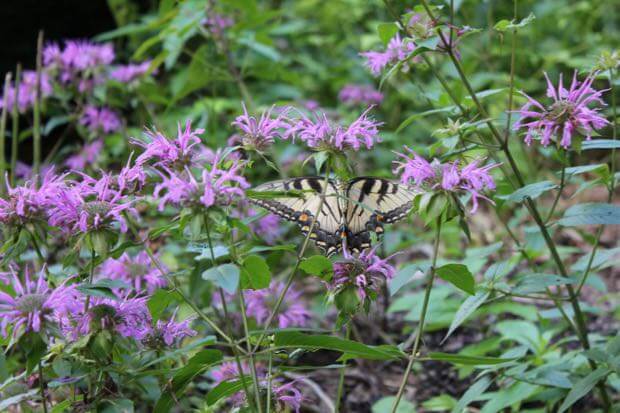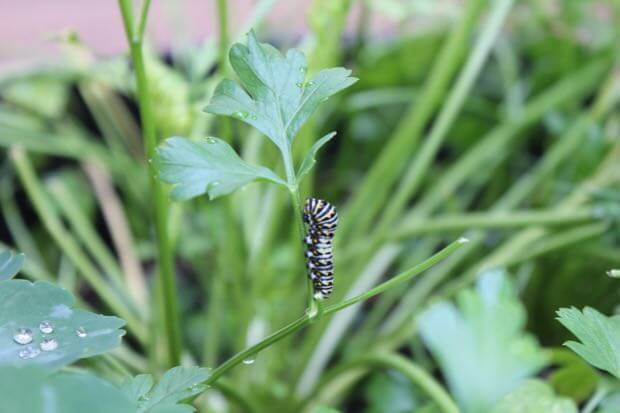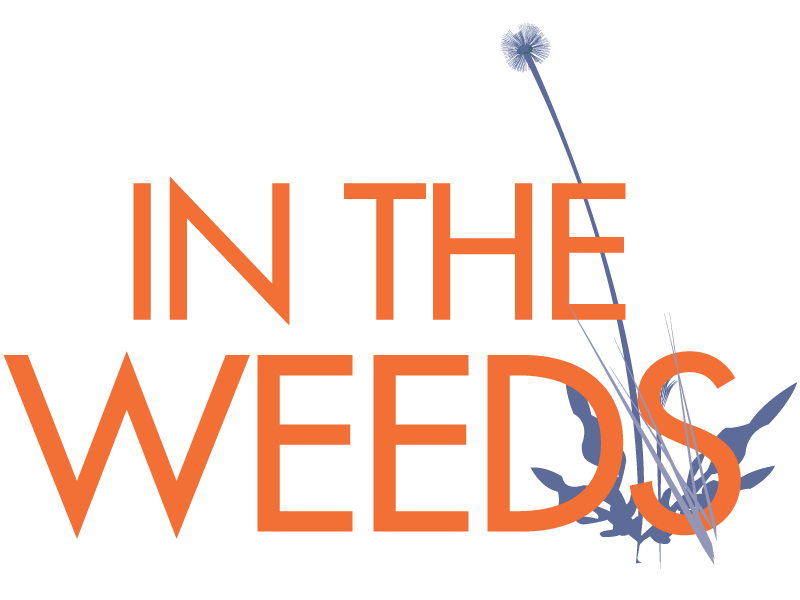
I recently had the pleasure of interviewing Doug Tallamy for the forthcoming In the Weeds podcast (stay tuned!). His book, Bringing Nature Home, packs a powerful message – that to help insure the survival of the many species on our planet – and, yes, that includes us – we need to rethink our way of gardening; we need to garden, not only for our own use and aesthetic pleasure, but also to provide food, habitat and nesting places for insects, birds and other creatures.
Tallamy is an entomologist at the University of Delaware. At the crux of his argument is an understanding of the vital role insects play in supporting the food web. Indeed, as Tallamy explains, insects are the primary bridge between plants, those marvelous beings that convert the sun’s energy into food, and animals that are not able to subsist on a strictly vegetarian diet.
Insects are unusual in this respect; they have developed the ability, over millenia of evolution, to digest the leaves of plants that would be lethal to most of us. As we explain to the children at our local elementary school garden, plants don’t have claws or teeth; the arsenal of poisons they contain in their leaves is their way of defending themselves. But the relationships of insects to leaves are often quite specialized. Take the example of the monarch caterpillar with whom many of us are familiar. He or she can munch only on milkweed leaves. On any other leaves, the monarch caterpillar will starve or be poisoned.

Thus, the equation is simple: no milkweed, no monarchs. But the math doesn’t stop there, because it turns out that most birds, for example, require hundreds of caterpillars in order to raise a clutch of hatchlings. And nearly all caterpillars require host plants, the specific plant or plants they are able to eat, typically native plants with which they co-evolved. Thus, no host plants = no caterpillars = no baby birds. And on it goes.
I won’t try to reproduce the whole argument here, as it is fairly complex. I refer you to Tallamy’s book as well as to the forthcoming interview in our podcast. But I will add that the consequences of what we plant – and don’t plant – in our gardens are far more wide-reaching than you may have ever imagined.
All of this I write as a preface to my musings today. During my interview with Tallamy, I brought up a line in his book I find particularly striking. He writes, “a plant that has fed nothing has not done its job.” Think about this for a moment. Think about what it would be like to look at every plant in a garden and ask what insects are you feeding? what birds and bats and other animals are you providing food for?
This statement drew my attention, because it neatly sums up the paradigm shift that Tallamy proposes to us: not only must we think beyond the idea that gardens are designed solely for human use and enjoyment, but, indeed, in doing so, we redefine the values on which our gardens are founded.
We may ask ourselves, for instance, what do we mean when we say a garden is beautiful? Answers to this question have varied considerably over the course of the history of gardens. It may be useful to remind ourseleves, though, that the idea that beauty can be separated from other values is a fairly modern notion that dates back to the early nineteenth century. Aesthetic value as such is a concept we owe to readers of Kant who repurposed sections of the The Critique of Judgment in order to craft what came to be known as “art for art’s sake.” Beauty has of course long been a fundamental feature of gardens but, prior to modern times, beauty was inextricable from other values a garden would have embodied, whether it had to do with the order of God’s creation or the wealth and power of the garden’s owner, just to cite two examples.
Tallamy’s statement that “a plant that has fed nothing has not done its job” made me wonder how we might redefine a garden’s beauty for our time. Here’s a possible scenario: you begin by planting parsley because it is good to eat, it seasons food and has a jolly, springy form. And then you learn that parsley also happens to be a host plant for the Eastern Black Swallowtail butterfly, so, the following year, you put out a couple of extra pots of parsley, in the hopes that you’ll get some caterpillars as well. When it happens (and, most likely, it will), all of a sudden, you have a double crop: parsley to eat and a dotting of sticky black and yellow-dotted babies that soon grow into the more elegant lime-green mature caterpillars with black and yellow spotted stripes. The plant has grown a new crop, has new colors and shapes, and its function has multiplied as well: it feeds you, caterpillars and, indirectly, baby birds and other creatures.

Does this alter the way you experience the beauty of a simple parsley plant? Certainly, a meadow of native wild flowers is enhanced by the prescence of butterflies and other insects. What about the counter example? Does a Japanese maple become less beautiful over time as you realize that, gorgeous as those leaves are, it does little to contribute to the food web?
One of the seminal “art for art” texts, the preface to Théophile Gautier’s Mademoiselle de Maupin, neatly prys apart plants’ beauty and their utility:
Nothing beautiful is indispensable to life.—If flowers should be suppressed, the world would not suffer materially; and yet who could wish that there were no flowers? I would rather give up potatoes than roses, and I do not believe there is more than one utilitarian in the world capable of digging up a bed of tulips to make room for cabbages.
Clearly, Gautier wasn’t much of a botanist, or a biologist for that matter, if he thought that the world would not suffer materially if flowers were eliminated. But Gautier, along with his contemporaries, such as Madame de Staël and Benjamin Constant, were making such over-the-top statements against a background of moral and political censorship. They sought to liberate writing and other forms of art from the corset of politics, bourgeois morality and rising captialism. Ironically, the “art for art’s sake” movement paved the way for the commodification of art, so that, today, the one value that beauty is the most closely tied to is monetary value. The same is true in our gardens. Many of the garden styles we’ve inherited, including, as Tallamy pointed out in our interview, the convention of the front lawn, are signifiers of social and eocnomic class.
But critiques of our modern notion of aesthetics have pointed out that, in reality, beauty is rarely, if ever, fully distinct from other values we hold, consciously and unconsciously. In the case of our suburban gardens, are we able to distinguish beauty from fitting in with the neighbors, for instance?
We become more conscious of these values when they are called into question. Tallamy’s statement that “a plant that has fed nothing has not done its job” challenges us to fold utility back into our notions of beauty. Just as some people have discovered the beauty of showcasing vegetable gardens in their front yards, some of us are also learning to experience beauty in signs that a plant is nourishing other creatures.
